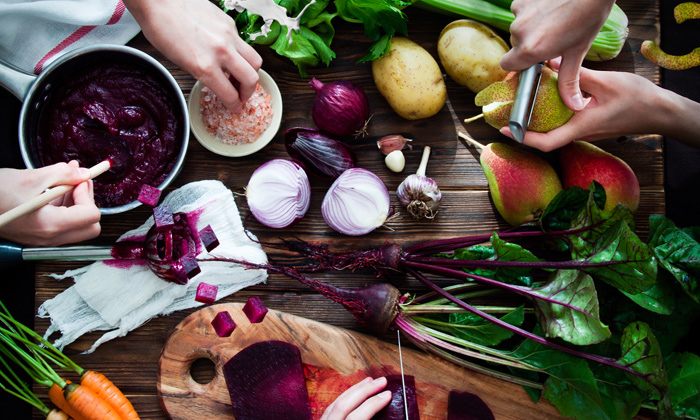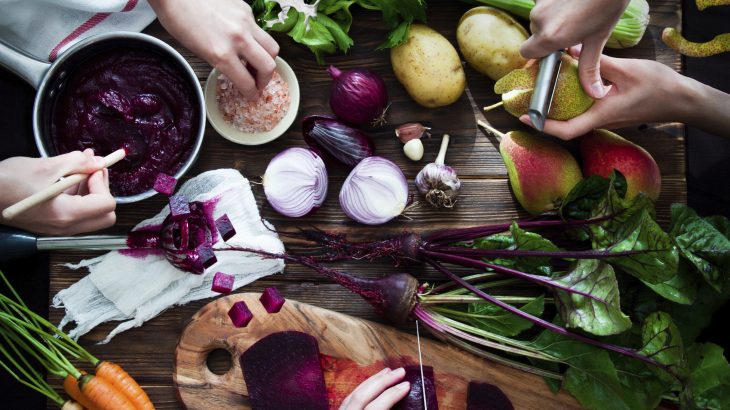How to prepare a healthy dish?

Follow these 10 tips and turn choosing the right food for a healthy lifestyle into a walk in the park. Use the ideas from the list to balance calories, choose the foods you should be eating on a regular basis, and limit those that aren’t as good for you.
1.- Balance your calories: the first step towards taking control of your weight is to see how many calories your body needs every day. Our app and your program advisor can help you out with this. Remember that physical exercise burns calories, so the amount you take in should be equal to or less than what you burn.
2.- Limit certain foods: those with solid fats, and added sugar and salt. These include pies, cookies, ice cream, candy, soft drinks, pizza, as well as fatty meats like ribs, pork sausage, bacon and sausage. Indulge in these occasionally, but not every day.
3.- Stay away from super-size meals: use smaller plates, bowls and glasses. Separate portions before you eat. When you go out to lunch or dinner order smaller options, share dishes or leave some of it for tomorrow.
4.- Eat healthy food more frequently: more vegetables, fruits, whole cereals, skim or 1% fat milk and dairy products. These foods contain all the nutrients you need to be healthy, including potassium, calcium, vitamin D and fiber. Make these the base of your diet and munch on them like snacks.
5.- Half of your dish should be made up of fruits and vegetables: when you’re preparing meals, make sure to choose red and orange vegetables, such as tomatoes, sweet potatoes and broccoli. Add fruits to your entrées, as side-dishes or dessert.
6.- Switch to skim or low-fat (1%) milk: it contains the same amount of calcium and other essential nutrients, but without as many calories and saturated fat.
7.- Half of the cereals you consume should be whole-grain: substitute whole cereals for refined grains, like whole wheat bread for white bread, or brown rice instead of white.
8.- Enjoy your (smaller) meals: take your time and enjoy meals. Eating too fast or eating while focused on other things can lead to excessive, unconscious calorie consumption. Pay attention to feelings of hunger and fullness before, during and after each meal. Use them as indicators that tell you when you need food and when you’ve had enough.
9.- Compare sodium contents: use “Nutrition Facts” labels to choose soups, breads and frozen foods that contain less sodium. Pick those canned products that are labeled as “low in sodium”, “reduced sodium” or “without added salt”.
10.- Drink water instead of sugary drinks: lower your calorie intake by drinking water or so-called diet drinks. For many people soda, energy drinks, and sports drinks represent a large portion of the sugars and calories added to their diets.

